 Java
Java javaTutorial
javaTutorial Concepts and purposes: Analyze the similarities and differences between Java interfaces and classes
Concepts and purposes: Analyze the similarities and differences between Java interfaces and classes
The difference between Java interfaces and classes: concepts and uses
Introduction
In Java programming, interface (Interface) and class (Class) are two important the concept of. Although they are both fundamental components of object-oriented programming, there are some significant differences in their definitions and uses. This article will discuss the difference between interfaces and classes in depth, including their concepts and uses, and provide relevant code examples to deepen understanding.
1. Concept
- Interface (Interface)
Interface is an abstract data type that defines a set of methods that have no implementation code. Interfaces are defined by using the interface keyword.
In order to implement the methods defined in an interface, a class must implement the interface. In Java, a class can implement multiple interfaces. A class that implements an interface must provide concrete implementation code for all methods defined in the interface.
The interface can be seen as a constraint, which standardizes the behavior of multiple classes through the interface. Interfaces provide a way to define common operations without caring about implementation details. An interface can be regarded as a contract or contract, and the implementing class must comply with the specifications defined in the interface.
- Class (Class)
Class is the basic concept of object-oriented programming. It is the blueprint or template of an object. Classes define the properties and methods of objects, and objects can be instantiated through classes. Classes are defined using the class keyword.
In Java, a class can inherit (extends) another class. Through inheritance, the subclass will automatically have the properties and methods of the parent class. At the same time, subclasses can override inherited methods as needed.
A class is the specific implementation of an object, which can contain variables, methods, constructors, etc. Classes can be instantiated as objects, which are instances of the class.
2. Purpose
- Interface (Interface)
The main purpose of the interface is to achieve polymorphism between classes. Polymorphism is an important concept in object-oriented programming, that is, an object can take on multiple forms.
Through the interface, a public behavior specification can be defined, and different classes can implement this interface according to their own needs. In this way, even different classes can perform unified operations by using the same interface.
For example, if you define a graphics interface Shape, you can have different graphics classes implement this interface, such as circle classes, rectangle classes, etc. In the program, you can uniformly operate different graphics classes by calling the methods defined in the interface, without caring about the specific graphics.
The following is a simple sample code:
interface Shape {
double getArea();
double getPerimeter();
}
class Circle implements Shape {
private double radius;
public Circle(double radius) {
this.radius = radius;
}
@Override
public double getArea() {
return Math.PI * radius * radius;
}
@Override
public double getPerimeter() {
return 2 * Math.PI * radius;
}
}
class Rectangle implements Shape {
private double width;
private double height;
public Rectangle(double width, double height) {
this.width = width;
this.height = height;
}
@Override
public double getArea() {
return width * height;
}
@Override
public double getPerimeter() {
return 2 * (width + height);
}
}
public class Main {
public static void main(String[] args) {
Circle circle = new Circle(5);
Rectangle rectangle = new Rectangle(4, 6);
System.out.println("Circle area: " + circle.getArea());
System.out.println("Circle perimeter: " + circle.getPerimeter());
System.out.println("Rectangle area: " + rectangle.getArea());
System.out.println("Rectangle perimeter: " + rectangle.getPerimeter());
}
}In the above example, the Shape interface defines methods for obtaining area and perimeter. The Circle class and Rectangle class implement this interface respectively, and Specific implementation code is provided. In the main method of the Main class, these methods can be called respectively to obtain the area and perimeter of graphics of different shapes.
- Class (Class)
Classes are widely used in object-oriented programming. The main uses of classes are as follows: - Encapsulate data and operations: Classes can encapsulate attributes and methods Encapsulated together to provide a clearer and organized way to manage data and operations.
- Inheritance and polymorphism: Classes can achieve code reuse and expansion through inheritance and polymorphism, reducing repeated writing of code.
- Creating objects: A class can create an object through instantiation. The object is a specific instance of the class, and the properties and methods of the object can be manipulated in the program.
3. Summary
Interfaces and classes are two important concepts in Java programming. An interface defines a set of methods without implementation code. The class that implements the interface must provide a specific implementation. The main function of the interface is to implement polymorphism between classes.
Class defines the properties and methods of objects and can be instantiated into specific objects. The main purpose of classes is to encapsulate data and operations, implement inheritance and polymorphism, and create objects.
The selection of interfaces and classes can be decided according to specific needs. If you need to implement polymorphic operations between different objects, you can use interfaces. If you need to encapsulate data and operations, and if you need to implement inheritance and polymorphism, you can use classes.
By understanding the concepts and uses of interfaces and classes, as well as the code examples provided, we can better grasp the differences between them and how to use them, and improve our Java programming abilities.
The above is the detailed content of Concepts and purposes: Analyze the similarities and differences between Java interfaces and classes. For more information, please follow other related articles on the PHP Chinese website!
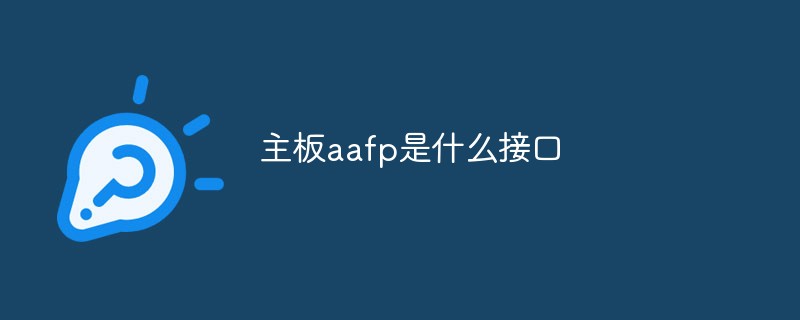 主板aafp是什么接口Aug 29, 2022 am 10:50 AM
主板aafp是什么接口Aug 29, 2022 am 10:50 AM主板上的aafp是音频接口;该接口的功能是启用前面板的“3.5mm”插孔,起到传输音频的作用,aafp跳线基本上由两个部分组成,一部分是固定在主板、硬盘等设备上的,由两根或两根以上金属跳针组成,另一部分是跳线帽,是一个可以活动的组件,外层是绝缘塑料,内层是导电材料,可以插在跳线针上。
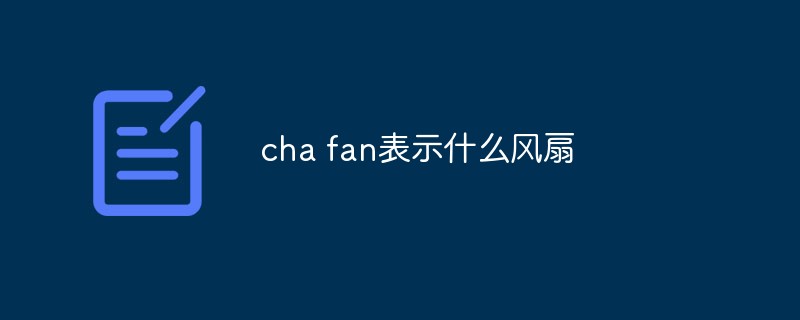 cha fan表示什么风扇Sep 15, 2022 pm 03:09 PM
cha fan表示什么风扇Sep 15, 2022 pm 03:09 PM“cha fan”表示的是机箱风扇;“cha”是“chassis”的缩写,是机箱的意思,“cha fan”接口是主板上的风扇供电接口,用于连接主板与机箱风扇,可以配合温度传感器反馈的信息进行智能的转速调节、控制噪音。
 ioioi是什么接口Aug 31, 2022 pm 04:50 PM
ioioi是什么接口Aug 31, 2022 pm 04:50 PMioioi是指COM接口,即串行通讯端口,简称串口,是采用串行通信方式的扩展接口。COM接口是指数据一位一位地顺序传送;其特点是通信线路简单,只要一对传输线就可以实现双向通信(可以直接利用电话线作为传输线),从而大大降低了成本,特别适用于远距离通信,但传送速度较慢。
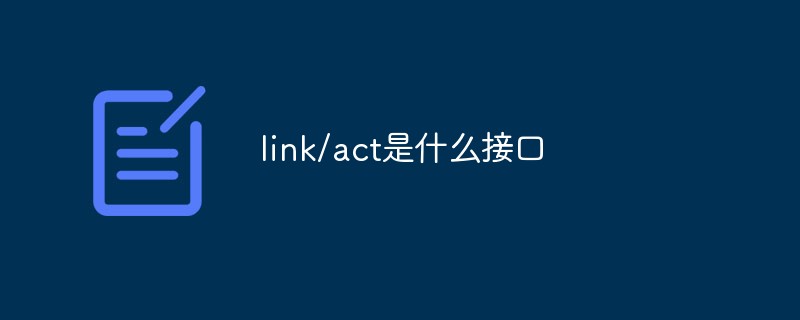 link/act是什么接口Feb 23, 2023 pm 04:14 PM
link/act是什么接口Feb 23, 2023 pm 04:14 PMlink/act是物理数据接口;交换机上的link/act指示灯表示线路是否连接或者活动的状态;通常Link/ACT指示灯用来观察线路是否激活或者通畅;一般情况下,若是线路畅通,则指示灯长亮,若是有数据传送时,则指示灯闪烁。
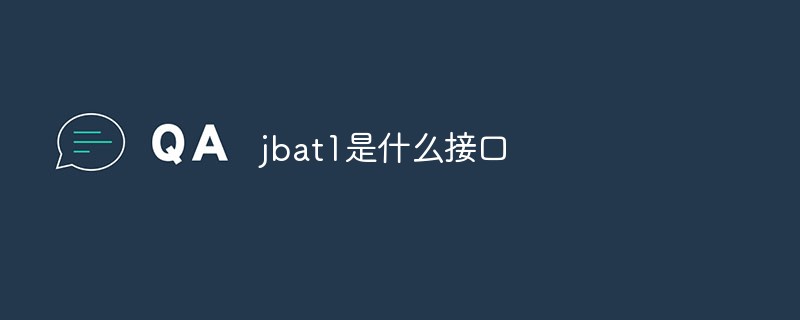 jbat1是什么接口Jun 23, 2021 pm 01:38 PM
jbat1是什么接口Jun 23, 2021 pm 01:38 PMjbat1是主板电2113池放电跳线接口,对于现在市面上常见的主板来说,它们都设计有CMOS的放电跳线,让用户在操作时更加便捷,它也因此成为了CMOS最常见的放电方法。
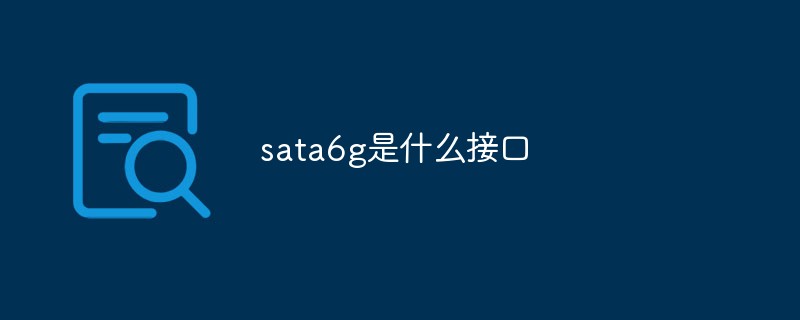 sata6g是什么接口Sep 14, 2022 am 11:46 AM
sata6g是什么接口Sep 14, 2022 am 11:46 AMsata6g是数据传输速度为“6G/s”的sata接口;sata即“Serial ATA”,也就是串行ATA,是主板接口的名称,现在的硬盘和光驱都使用sata接口与主板相连,这个接口的规格目前已经发展到第三代sata3接口。
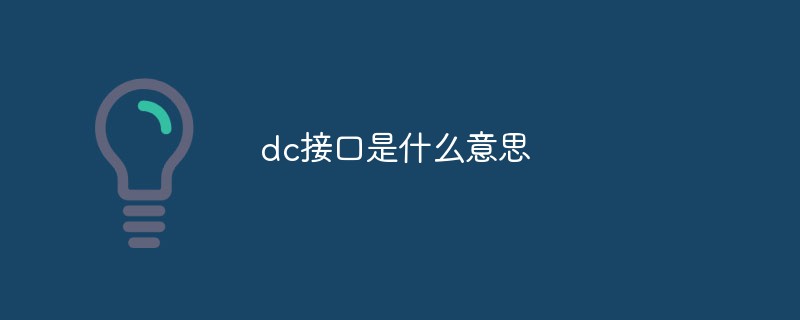 dc接口是什么意思Aug 24, 2022 am 10:47 AM
dc接口是什么意思Aug 24, 2022 am 10:47 AMdc接口是一种为转变输入电压后有效输出固定电压接口的意思;dc接口是由横向插口、纵向插口、绝缘基座、叉形接触弹片、定向键槽组成,两只叉型接触弹片定位在基座中心部位,成纵横向排列互不相连,应用于手机、MP3、数码相机、便携式媒体播放器等产品中。
 鼠标插在主机哪个接口Sep 13, 2022 pm 03:50 PM
鼠标插在主机哪个接口Sep 13, 2022 pm 03:50 PM鼠标插在主机的串口接口、PS/2接口或USB接口上。串行接口是最古老的鼠标接口,是一种9针或25针的D型接口,将鼠标接到电脑主机串口上就能使用。PS/2接口是1987年IBM公司推出的鼠标接口,是一种鼠标和键盘的专用接口,是一种6针的圆型接口。USB接口,是一种高速的通用接口,具有非常高的数据传输率,且支持热插拔。


Hot AI Tools

Undresser.AI Undress
AI-powered app for creating realistic nude photos

AI Clothes Remover
Online AI tool for removing clothes from photos.

Undress AI Tool
Undress images for free

Clothoff.io
AI clothes remover

AI Hentai Generator
Generate AI Hentai for free.

Hot Article

Hot Tools

Dreamweaver CS6
Visual web development tools

MantisBT
Mantis is an easy-to-deploy web-based defect tracking tool designed to aid in product defect tracking. It requires PHP, MySQL and a web server. Check out our demo and hosting services.

ZendStudio 13.5.1 Mac
Powerful PHP integrated development environment

Notepad++7.3.1
Easy-to-use and free code editor

DVWA
Damn Vulnerable Web App (DVWA) is a PHP/MySQL web application that is very vulnerable. Its main goals are to be an aid for security professionals to test their skills and tools in a legal environment, to help web developers better understand the process of securing web applications, and to help teachers/students teach/learn in a classroom environment Web application security. The goal of DVWA is to practice some of the most common web vulnerabilities through a simple and straightforward interface, with varying degrees of difficulty. Please note that this software




